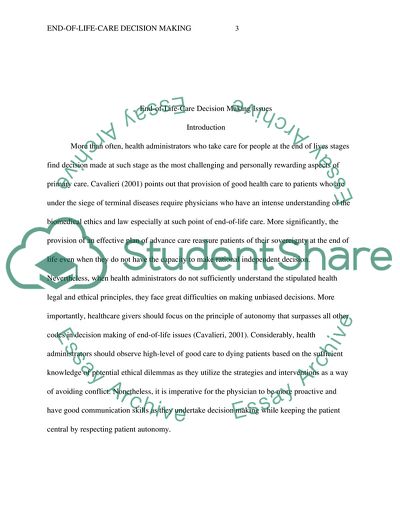Cite this document
(Patients Autonomy in Deciding What to Do at the End-of-Life Research Paper, n.d.)
Patients Autonomy in Deciding What to Do at the End-of-Life Research Paper. Retrieved from https://studentshare.org/health-sciences-medicine/1769944-end-of-life-care-issues-with-decision-making-by-healthcare-proxy-or-advance-directives
Patients Autonomy in Deciding What to Do at the End-of-Life Research Paper. Retrieved from https://studentshare.org/health-sciences-medicine/1769944-end-of-life-care-issues-with-decision-making-by-healthcare-proxy-or-advance-directives
(Patients Autonomy in Deciding What to Do at the End-of-Life Research Paper)
Patients Autonomy in Deciding What to Do at the End-of-Life Research Paper. https://studentshare.org/health-sciences-medicine/1769944-end-of-life-care-issues-with-decision-making-by-healthcare-proxy-or-advance-directives.
Patients Autonomy in Deciding What to Do at the End-of-Life Research Paper. https://studentshare.org/health-sciences-medicine/1769944-end-of-life-care-issues-with-decision-making-by-healthcare-proxy-or-advance-directives.
“Patients Autonomy in Deciding What to Do at the End-of-Life Research Paper”, n.d. https://studentshare.org/health-sciences-medicine/1769944-end-of-life-care-issues-with-decision-making-by-healthcare-proxy-or-advance-directives.


